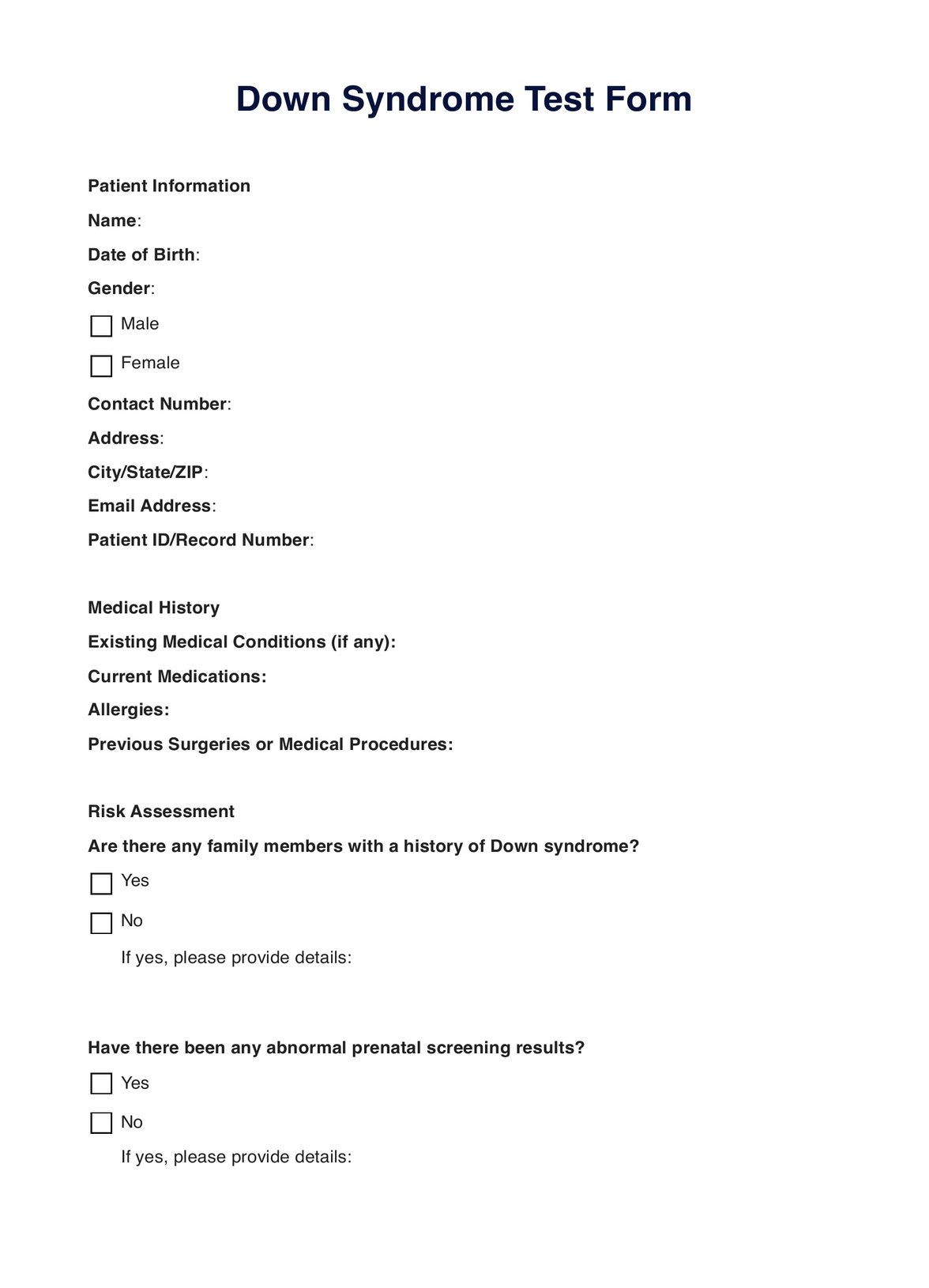Expectant parents or healthcare providers typically request Down syndrome tests during prenatal care.

Down Syndrome
Discover the value of accurate prenatal screening for Down Syndrome. Give your baby the best possible care from the beginning.
Down Syndrome Template
Commonly asked questions
Down Syndrome Tests are used during pregnancy to assess the risk of a fetus having Down syndrome. They may also be used postnatally if there are clinical indications.
?
Down Syndrome Tests can be conducted through prenatal, diagnostic, or newborn screening, depending on the pregnancy stage or the patient's age. Prenatal screening involves blood tests and ultrasounds, while diagnostic tests like CVS or amniocentesis are more invasive and definitive. Newborn screening involves physical examinations and genetic testing.
?
EHR and practice management software
Get started for free
*No credit card required
Free
$0/usd
Unlimited clients
Telehealth
1GB of storage
Client portal text
Automated billing and online payments











